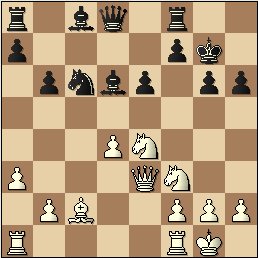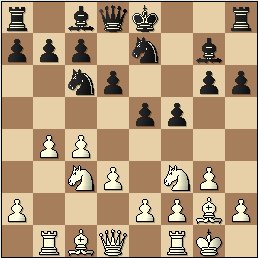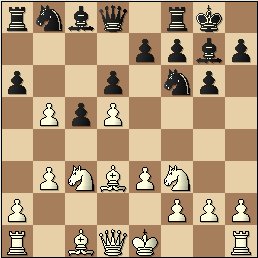


The b-pawn: Responsibilities and Possibilities.
Recently I was reviewing games of one of my students and, among other things, noticed an interesting pattern that we later discussed during the session.
Before I get into specifics, let me present you with the following three examples from his games:
 |
 |
 |
| Black just played 1...b7-b6. What is your assessment of this move? | White just played 1.b2-b4. What is your assessment of this move? | White just played 1.b2-b3. What is your assessment of this move? |
Solutions:
#1. My student wanted to activate his Bc8, but as the result, the Nc6 was temporarily left unprotected. White (who was higher-rated by some 600+ points) responded with explosive 2. d5 immediately exploiting the opportunity by creating a threat of double attack (Qc3+). Black is worse, but not losing yet (2...Ne5 or even 2...exd5 2.Qc3+ f6). However, probably shocked by White's move, Black panicked and quickly collapsed.
#2. Now playing with White, my student was attempting to execute a standard plan in English – advancing pawns on the Q-side. However, after 1.b4, the Nc3 is hanging and Black had a discovery attack - 1…e4 winning the Nc3 and leaving White with insufficient compensation (2 pawns). White did put some fight, but soon resigned.
#3. Finally, in this example – playing Black, my student continued with normal development (1...Nbd7?) instead of seizing the opportunity that White presented with his last move. After, 1…Nxd5 Black wins a pawn and then some more.
Summary
So, by now you probably guessed what was the subject of conversation with my student – advancing the b-pawn: Benefits vs. Danger.
There are many opening variations where you would want to have your bishop developed on the long diagonal. This is especially true when there is a pawn on e3(e6). Some examples are Caro-Can, Queens gambit for Black; Benko, some lines in Sicilian for White.
Even though your Bishop might look much better on the long diagonal, you always must keep in mind that the b-pawn has certain responsibilities and advancing it may give some tactical possibilities to your opponent.
The b-pawn has the following responsibilities
– covers a6(a3) and c6(c3) (and any piece or pawn that is placed there)
– covers the long diagonal – square a8(a1) as well as the R which is commonly there
– covers c8(c1) from attack from a6(a1).
Here is a list of some more common tactical possibilities (motifs) after the b-pawn advances:
| Target | What to examine |
| Nc3(c6) | double attack, pin, discovered attack |
| Ra1(a8) | double attack, discovered attack, skewer, trap |
| Square c3(c6) | a great outpost for the N, B or, when fighting for the c-file, for the R |
| Square a3(a6) | when there is a fight for the open c-file, one could place a B there to drive the opponent’s rook from c8(c1). |
The above list is somewhat general. When working on your opening preparation, make sure you familiarize yourself with specific ideas that are more likely to happen in your games.
Finally, don’t forget that you need to practice for both sides, since you as easily can be planning b3/b4 (b6/b5) as considering what to do against it when your opponent plays it.
====================================================================
How did you do? For comments send email or this
form
You might want to take a look at my new Tactical test
More on chess training (serious and enlightening)
| Chess Exam and Training Guide $24.95 + shipping | Chess Training Services |
Copyrighted @ 2006 Igor Khmelnitsky
For comments or permission to reprint please send inquires via email or this form